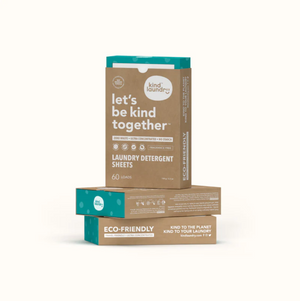Paint stains on clothes can be a frustrating ordeal, especially when you're not sure how to tackle them. Whether you're dealing with a spill from a home improvement project or a splatter from an art session, knowing how to properly remove paint stains from clothes can save your favorite garments. In this guide, we'll explore the different types of paint stains, the best methods for removing them, and common mistakes to avoid. Let's dive into how you can restore your clothes to their former glory.
Different Types of Paint Stains
Understanding the type of paint that has stained your clothes is crucial to determining how to remove it. Paint can be broadly categorized into two main types: water-based paints (such as latex and acrylic) and oil-based paints. Each type of paint requires a different approach to effectively remove the stain.
Water-Based Paints (Latex or Acrylic)
Water-based paints, including latex and acrylic, are commonly used for home decor and craft projects. They are generally easier to clean because they can be dissolved in water. However, if left to dry, they can still pose a challenge when it comes to stain removal.
Oil-Based Paints
Oil-based paints are often used for exterior surfaces or in situations where a more durable finish is needed. These paints are more resistant to water and therefore require solvents like paint thinner or turpentine for removal. Oil-based paint stains can be particularly stubborn, especially once they have dried. So it’s important to act quickly to remove the paint stain.

How to Get Latex or Acrylic Paint Out of Clothes
If you’ve spilled water-based paint on your clothes, time is of the essence. The sooner you act, the better your chances are of removing the stain completely. Follow these steps to effectively remove latex or acrylic paint stains from your clothes.
1. Act Immediately
As soon as you notice the paint stain, it's important to take action. The longer the paint sits on the fabric, the harder it will be to remove. If the paint is still wet, you have a much better chance of removing it entirely.
2. Remove Excess Paint
Use a spoon, dull knife, or the edge of a credit card to gently scrape off as much excess paint as possible. Be careful not to press the paint deeper into the fabric. Removing the bulk of the paint will make the next steps more effective.
3. Rinse Using Warm Water
Hold the stained area under warm running water. The goal here is to flush out as much of the paint as possible before it dries. If the stain is large, try to run the water through the back of the fabric to push the paint out the way it came in.
4. Apply Dish Soap
Dish soap is excellent for breaking down paint, especially water-based types. Apply a small amount of dish soap directly to the stain and gently rub the fabric together. Work the soap into a lather, allowing it to penetrate the fibers of the fabric. You can also try placing half of a Kind Laundry detergent sheet directly onto the stain, wetting it under warm water and allowing it to penetrate into the fabric. Gently rub the materials together to work the solution into the fabric.
5. Use Stain Remover
After treating the stain with dish soap, apply a stain remover designed for tough stains. Let it sit for at least 10-15 minutes to allow the product to work its magic. Follow the instructions on the stain remover for the best results. Kind Laundry’s Vegan Stain Remover Bar works effectively to tackle tough stains and is gentle on hands.
6. Consider Professional Cleaning
If the stain persists after your initial attempts, it may be time to take the garment to a professional cleaner. They have access to specialized solvents and techniques that can remove stubborn paint stains without damaging your clothing.
7. Re-Treat if Needed
After washing with detergent such as Kind Laundry detergent sheets, check the stained area before drying. If the stain is still visible, repeat the steps above. It's important not to dry the garment until you're satisfied with the stain removal, as heat can set the stain permanently.
How to Get Oil-Based Paint Stains Out of Clothes
Removing oil-based paint stains requires a bit more effort due to their resistance to water. However, with the right approach, you can still achieve excellent results and remove the paint stain from your clothes.
1. Dab The Stain
Start by dabbing the stained area with a clean cloth or paper towel to absorb as much paint as possible. Avoid rubbing, as this can spread the stain and push it deeper into the fabric.
2. Rinse The Stained Area
Rinse the stained area with warm water, just as you would with water-based paint. This will help to loosen the paint and prepare the fabric for the next step.
3. Sponge The Stain With Paint Thinner
Oil-based paints require a solvent to break them down. Apply a small amount of paint thinner, turpentine, or mineral spirits to a clean cloth, and gently sponge the stained area. Work from the outside of the stain toward the center to prevent it from spreading. Be sure to do this in a well-ventilated area and wear gloves to protect your skin.
4. Soak in Dish Soap
After treating the stain with a solvent, soak the stained area in a solution of warm water and dish soap. This will help to further break down the paint and make it easier to remove. You can also handwash your garment in warm water with a Kind Laundry detergent sheet which dissolves completely in water and is gentle on hands. Kind Laundry is specifically formulated with stain fighting enzymes to target tough stains.
5. Rinse And Wash
Rinse the fabric thoroughly under warm water to remove any remaining solvent and soap. Then, wash the garment according to the care label instructions. Use the hottest water that is safe for the fabric to ensure the paint is completely removed. Add 1-2 Kind Laundry detergent sheets to your wash cycle along with your garments for an effective clean.
6. Treat With a Stain Remover Bar
For any remaining traces of the stain, use a stain remover bar. Rub the bar directly onto the stain and let it sit for a few minutes before rinsing and washing the garment again. Our stain remover bar works effectively to tackle tough set-in stains and is gentle on hands.
7. Re-Treat if Needed
As with water-based paints, it's important to check the stained area before drying. If the stain is still present, repeat the above steps. Avoid using the dryer until the stain is completely gone.

How to Remove Dried Paint from Clothes
Dried paint stains are notoriously difficult to remove, but not impossible. Here's a step-by-step guide to tackling dried paint stains on clothes:
- Scrape Off Excess Paint: Use a dull knife or scraper to remove as much of the dried paint as possible. Be gentle to avoid damaging the fabric.
- Apply a Paint Remover or Thinner: Apply a small amount of paint remover, turpentine, or rubbing alcohol to the dried stain. Let it sit for a few minutes to soften the paint.
- Gently Scrub the Stain: Using a soft-bristle brush or an old toothbrush, gently scrub the stained area to lift the softened paint.
- Rinse and Wash: Rinse the fabric under warm water and wash it according to the care label. Use a stain remover if necessary before the final wash. Kind Laundry Detergent Sheets pair well with the Vegan Stain Remove Bar for an effective, plant-based clean with added enzymes.
- Repeat if Necessary: Dried paint stains may require multiple treatments. If the paint stain persists, repeat the steps until it is completely removed.

The Power of Enzymes in Stain Removal
Enzymes are natural proteins that act as catalysts to speed up chemical reactions, making them incredibly effective at breaking down stains. Different enzymes target different types of stains. For instance, protease enzymes break down protein-based stains, while amylase targets carbohydrate-based stains. Lipase enzymes are effective against oily stains. When it comes to paint stains, which can be composed of complex organic compounds, the enzymes in Kind Laundry Detergent Sheets work to break down these compounds, making it easier to wash the stain out of the fabric.
How Kind Laundry Detergent Sheets Work on Paint Stains
-
Breaking Down the Stain: When you apply our laundry sheets with enzymes to a paint stain, the enzymes immediately start working on breaking down the components of the paint. Whether it's a water-based paint like latex or acrylic, or a more stubborn oil-based paint, the enzymes target the stain at a molecular level. This action helps to loosen the paint from the fabric fibers, making it easier to rinse away.
-
Gentle on Fabrics: One of the biggest challenges in removing paint stains is doing so without damaging the fabric. Harsh chemicals and vigorous scrubbing can often cause wear and tear on clothing. However, Kind Laundry Detergent Sheets are designed to be gentle on all types of fabrics. The enzymes do the hard work of breaking down the stain, so you don't have to resort to harsh methods that could damage your clothes.
-
Eco-Friendly Cleaning: In addition to their effectiveness, Kind Laundry Detergent Sheets are a sustainable choice. Traditional liquid detergents often contain harsh chemicals that can be harmful to the environment. In contrast, Kind Laundry Detergent Sheets are biodegradable and free from harmful ingredients. This makes them a great option for those who want to remove tough stains like paint while also being mindful of their environmental impact.
- Ease of Use: Our laundry sheets are incredibly easy to use. Simply add a sheet to your washing machine along with your stained garment, and let the enzymes do the work. There’s no need to measure out detergent or deal with spills and messes. Plus, their compact size makes them convenient to store and travel with.
Common Mistakes to Avoid When Removing Paint Stains from Clothes
Even with the best intentions, it's easy to make mistakes that can worsen the paint stain or damage your clothing. Here are some common pitfalls to avoid:
Rubbing Too Harshly
Vigorous rubbing can damage the fabric and push the paint deeper into the fibers. Always blot or dab stains instead of rubbing them. This will help to lift the paint from the fabric without causing further harm.
Not Performing a Patch Test
Before using any solvent or stain remover, always perform a patch test on a small, inconspicuous area of the fabric. This ensures that the product won’t damage or discolor your clothing.
Not Checking Care Labels
Always check the care labels on your clothing before attempting to remove paint stains. Some fabrics, like silk or wool, may require special treatment and could be damaged by harsh chemicals or high temperatures.
Conclusion
Removing paint stains from clothes doesn't have to be a daunting task. By understanding the type of paint you're dealing with and following the appropriate steps, you can successfully remove both fresh and dried paint stains from your garments. Remember to act quickly, use the right products such as Detergent Sheets and Stain Remover Bar, and avoid common mistakes to keep your clothes looking their best. With this comprehensive guide, you'll be well-equipped to tackle any paint stain that comes your way and save your clothes from being ruined.















